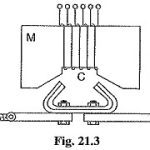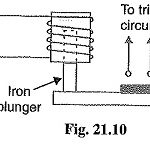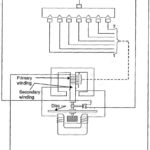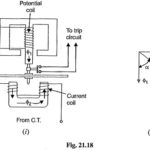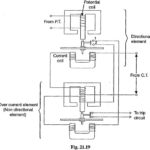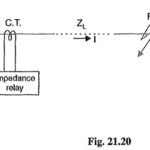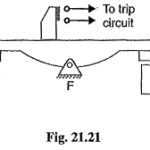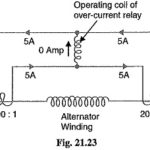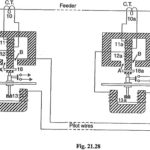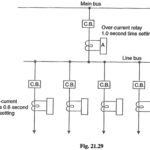Protective Relays Articles:
Protective Relay: A Protective Relay is a device that detects the fault and initiates the operation of the circuit breaker to isolate the defective element from the rest of the system. The Protective Relay detect the abnormal conditions in the electrical circuits … (Read More)
Electromagnetic Attraction Relay – Working Principle and its types: Electromagnetic attraction relay operate by virtue of an armature being attracted to the poles of an electromagnet or a plunger being drawn into a solenoid. Such Basic Relays may be actuated by … (Read More)
Relay Timing Circuit: An important characteristic of a relay is its time of operation. By the Relay Timing Circuit of operation is meant length of the time from the instant when the actuating element is energized to the instant when the … (Read More)
Induction Type Overcurrent Relay(Non-Directional): This Induction Type Overcurrent Relay works on the induction principle and initiates corrective measures when current in the circuit exceeds the predetermined value. The actuating source is a current in the circuit supplied to the relay from … (Read More)
Induction Type Directional Power Relay: This Induction Type Directional Power Relay operates when power in the circuit flows in a specific direction Unlike a non-directional overcurrent relay, a directional power relay is so designed that it obtains its operating torque by … (Read More)
Induction Type Directional Overcurrent Relay: The directional power relay is unsuitable for use as a directional protective relay under short-circuit conditions. When a short-circuit occurs, the system voltage falls to a low value and there may be insufficient torque developed in … (Read More)
Distance Relays or Impedance Relays: The operation of the relays discussed so far depended upon the magnitude of current or power in the protected circuit. However, there is another group of relays in which the operation is governed by the ratio … (Read More)
Definite Distance Type Impedance Relay: Fig. 21.21 shows the schematic arrangement of a Definite Distance Type Impedance Relay. It consists of a pivoted beam F and two electromagnets energized respectively by a current and voltage transformer in the protected circuit. The … (Read More)
Differential Relay: Most of the relays discussed so far relied on excess of current for their operation. Such relays are less sensitive because they cannot make correct distinction between heavy load conditions and minor fault conditions. In order to overcome this … (Read More)
Translay System: This system is the modified form of voltage-balance system. Although the principle of balanced (opposed) voltages is retained, it differs from the above voltage-balance system in that the balance or opposition is between voltages induced in the secondary coils … (Read More)
Types of Protection: When a fault occurs on any part of electric power system, it must be cleared quickly in order to avoid damage and/or interference with the rest of the system. It is a usual practice to divide the Types … (Read More)
